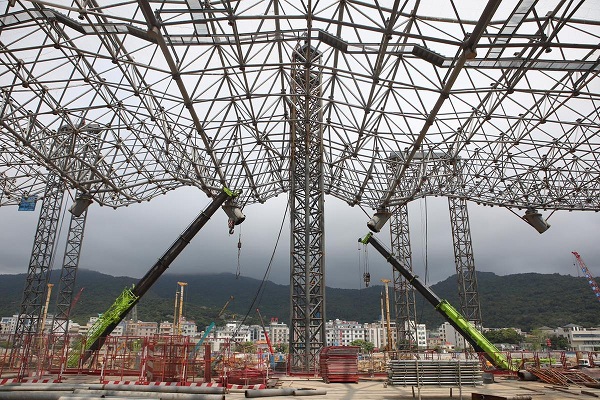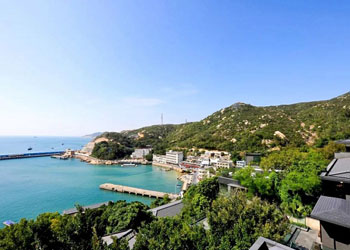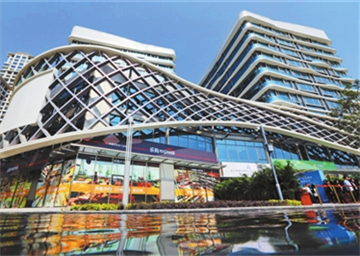'Seabird' Airport T2 takes shape after steel grid installation
The lifting of all steel structural grids of Zhuhai (Jinwan) Airport's Terminal 2 was completed on April 28, presenting its "Seabird" design to the public.
The 65,000-sq-m grid structure used 6,120 metric tons of steel and is divided into four parts including the main buildings, as well as three corridors each in the east, west, and south.

Steel structural grids of Zhuhai (Jinwan) Airport's Terminal 2 [Photo by Li Jianshu / Zhuhai Daily]
Construction on the Terminal 2's steel structure started in June 2021. Conductor China State Construction Second Engineering Bureau has applied hanging techniques to the east and west corridors, as well as lifting techniques to the main building and its south corridor. Y-style columns have been installed to provide support for the grids.
Installation work on the metal roof and curtain wall is now underway, with the main structure of Terminal 2 expected to be completed before the 14th China International Aviation & Aerospace Exhibition (Airshow China) scheduled from Nov 8 to 13. The east corridor has already finished its metal roof installation.
In addition to Terminal 2, the renovation and expansion of Zhuhai (Jinwan) Airport also include building new aprons and taxiways. Upon operation, an additional 28 aprons will be available and the two terminals will then be able to serve 27.5 million passengers annually.
Related
Work begins on 'seabird' terminal for Zhuhai Airport
Terminal II construction commenced on Nov 29 to increase the overall capacity of Zhuhai (Jinwan) Airport to 27.5 million passengers by 2027.
'Seabird' terminal for Zhuhai Airport taking shape by April
The first piece of the main building grid structure of Terminal II, a major part of the renovation and expansion of Zhuhai (Jinwan) Airport, was lifted and installed on March 22.
Lifting of Zhuhai Airport T2 steel structure progresses
The 2,360-metric-ton TS2 steel structural grid of Zhuhai (Jinwan) Airport's Terminal 2 was hydraulically lifted at a speed of 4 m (13 ft) per hour on April 20, marking the completion of the biggest and most difficult grid lifting in the project's construction.



